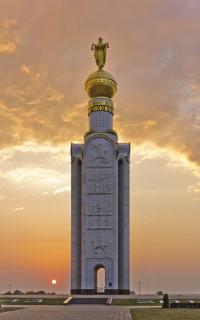
Prokhorovka Monument
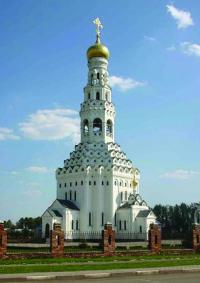
Prokhorovka Cathedral
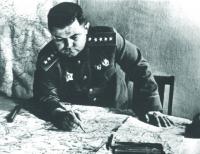
Soviet General Nikolai Vatutin
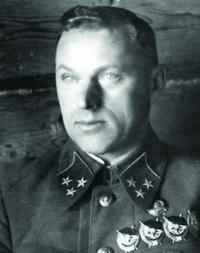
Soviet General Konstantine K.Rokossovsky
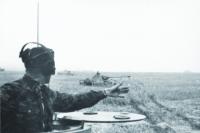
A Waffen-SS tank crewman at Kursk
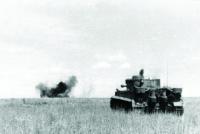
A Waffen-SS Tiger I lands a direct hit on a T-34 somewhere during the battle of Kursk on 10 July.
On the morning of June 22, 1941, over 150 divisions with 3,200,000 men, 500,000 horses, 3,550 tanks, and 2,000 combat aircraft of the Germany Army in the East launched an attack on the Soviet Union. Meeting great success early in the invasion, Adolf HitlerÙs armies reached the suburbs of Moscow before they were finally stopped. Over the next two years, the Soviets & the Germans fought many enormous battles. Both Josef Stalin & Hitler were looking for a place for one decisive battle to lead their armies to victory. THIS WEEK, 70 years ago, that place would be a large bulge in the front lines around the Russian city of Kursk.
In the spring of 1943, RussiaÙs rivers overflowed their banks and mud was everywhere as the winter snows melted. This gave both the German & Soviet armies time to recover from the heavy fighting that occurred earlier in the year.
The Kursk salient presented a very tempting target for the Germans. By eliminating the bulge in the front line, the Germans could shorten the area they needed to defend by over 100 km. It also gave the German Wehrmacht an opportunity to destroy & capture scores of Red Army troops. Hitler wanted captured Soviet prisoners shipped to the west to be used as slave labor.
Codenamed "Operation Citadel," by the German High Command, the plan was to attack the salient with Army Group Center and Army Group South. Using a pincher movement, both armies would squeeze the neck of the Kursk bulge until they could break through the Soviet lines. The German armies would then surround & destroy the Red Army in the Kursk pocket.
Many top German generals were against any big offensive plans against the Soviets. They thought it would be better to put in place a strong defensive strategy to counter the coming Soviet offensives. General Heinz Guderian and Field Marshal Erich von Manstein tried to dissuade Hitler from going forward with the operation. Hitler even admitted the thought of such a large and risky operation turned his stomach.
As soon as the German plans were finalized, secret agent "Lucy" reported many of the plans back to the Russians. They knew the plan of attack and had a few dayÙs window on when it would take place (between July 3-6).
The Soviets did not sit idly as the Germans began building up their armored forces on both sides of the Kursk bulge. By the end of April, over 105,000 civilians were pressed into building defensive works. The number increased to 300,000 in June. The objective of the multiple lines of defenses under construction was to channel the German armor into killing fields where the Soviets could bleed them white. Massive minefields were laid containing nearly a million anti-personnel and anti-tank mines. In total, six main defensive lines were built to a depth of over 100 kilometers. More than 6,000 anti-tank guns were put together with over 20,000 guns and mortars, along with nearly 1,000 Katyusha rocket batteries, to defend the north and south ends of the bulge. Once the Soviets were able to determine the main German thrusts, several armored corps held in reserve would be used to blunt any German penetration.
The German forces amassed for "Citadel" were enormous: nearly 800,000 troops, 2,100 aircraft, 2,451 tanks and assault guns (including the new Tigers & Panthers), and 7,400 guns and mortars. The tanks for the operation accounted for 70 percent of all of the armor on the Eastern Front. Even with such a large force, the Germans could only hope for localized superiority where they attacked because the overall Soviet numbers were even larger. Hitler knew that going into the strength of the Soviet defenses was a big gamble, but he felt a German victory would turn the tide of the war.
On the morning of July 5th, after seeing signs that the German offensive was imminent in the northern part of the salient, Soviet Commander Konstantin Rokossovsky ordered his artillery and Katuyusha rocket units to open fire. The Germans responded with their own intense artillery barrage and used Stuka dive bombers to attack Soviet positions. German General Walther Model only committed one of his six Panzer (Tank) divisions to the initial assault on the northern front. Because of this, not much progress was made against stiff Soviet resistance. Only the 20th Panzer Division was able to break through the Red Army lines in the village of Bobrik. Both sides poured in reinforcements, keeping the German advance to only 4-6 miles in the first day of fighting.
On the southern front, Field Marshal von Manstein had more tanks, artillery and infantry than ModelÙs army in the north. With more tanks at his disposal than his northern counterpart, von Manstein used them to attack as an armored spearhead. The Soviets opened with a 600-gun artillery barrage as the German forces were gathering for their offensive. The Germans soon responded with an intense early morning preliminary bombardment. More shells were used in this initial bombardment than were used in the earlier Polish & French campaigns combined.
As the attack was just getting underway, the Soviets launched their air force to attempt to destroy GermanyÙs planes still sitting at their airfields. German radar picked up the large attack force & launched their fighters to meet them in the air. In what is believed to be one of the largest air battles in history, more than 500 aircraft fought for control of the skies over the battlefield. The Germans’ planes were able to repulse the Soviet air fleet, giving it control of the air for the opening of "Citadel".
Paths were cleared through the minefields by German engineers and the tanks advanced into the Soviet lines. With heavy support from the air and concentrated tank attacks, von MansteinÙs Armeegruppe made slow and steady progress against the formidable Red Army defenses. By the end of the first day, some of the German Panzers advanced as much as 20km.
Over the next few days on the northern front, German armor continued to batter the strong Soviet defensive fortifications. General Model ordered successive attacks to try to break through the Red Army lines. The fighting centered on the village of Ponyri and Hill 235.5 –called by both the Soviets and the Germans "Little Stalingrad". While the Wehrmacht finally captured Hill 235.5 on July 9th, it never could break through the Soviet lines around Ponyri.
ModelÙs principle target was Olkhovatka –a town he felt was the key to unlocking the Soviet defenses. The Soviets were well aware of the importance of holding the town, so the area held some of the strongest fortifications. These included T-34 tanks that were camouflaged and dug in with only their turrets exposed. A huge German armor onslaught of nearly 1,000 tanks attacked the Red Army defenses. With both sides suffering grievous losses, the Germans were never able to break through the Soviet defenses in the north.
In the south, the stage was being set for the largest tank battle in history. Because of the better range and firepower of the German Tiger and Panther tanks, Soviet General Nikolai Vatutin decided to dig his T-34 and KV-1 tanks into the ground for protection. Still, with close air support, the German armor was able to advance to the second Red Army defensive line.
With the German offensive being stopped in the north, the Soviet High Command decided it was safe to send the 5th Guards Tank Army to the south to meet the oncoming Panzer onslaught. This tank army and its supporting units, being held in reserve, drove nearly 300 km to the south to the village of Prokhorovka.
By July 12, after a week of heavy fighting and mounting casualties, German General Hermann Hoth decided to make one big push with his remaining 600 tanks. Hoth planned to break through the remaining Soviet defenses around Prokhorovka to allow the German armor to take Kursk.
Cloudy with periodic rain showers, the mass of German armor moved towards Prokhorovka. The German Luftwaffe began bombing Soviet positions in the path of the advance. By 8:30a.m, the Soviets unleashed a massive artillery barrage on the advancing Germans. Soon after, over 500 Red Army tanks charged the German armor through the smoke, negating the WehrmachtÙs advantage of long range firepower. They battled each other at point blank range leaving the fields littered with burning tank hulks. At the same time, a huge air battle was taking place overhead. Over 1,500 total sorties were flown by the German and Soviet air forces. At the end of what is considered to be the largest tank battle in history, the Soviets estimated nearly 700 destroyed machines littered the battlefield. The Soviet armor and defense fortifications held firm.
On July 16th, Hitler canceled "Operation Citadel". The Americans and British had just landed in Sicily and Hitler felt he needed to transfer some German divisions from Russia to Italy. Also, German forces were needed in the north to counter a new Soviet offensive.
Despite inflicting much larger casualties against the Red Army, the Battle of Kursk was an operational failure for the Germans. The Wehrmacht never broke through the intricate defenses to take Kursk, or complete an encirclement of a large Soviet army. Instead, the Soviets were successful in bleeding the Germans dry. After Kursk, the German Army was never able to mount a major offensive in the East. The remainder of the war would be a defensive struggle to the fall of Berlin in the spring of 1945.
NEXT WEEK: SICILY
«Go back to the previous page.





